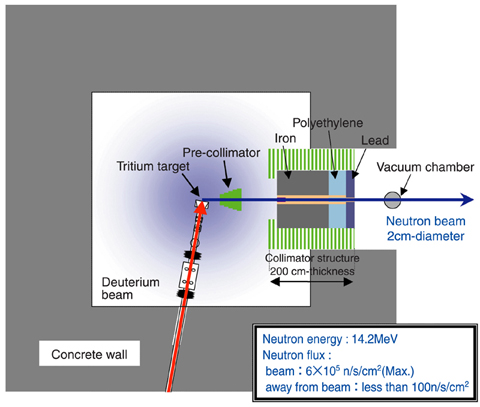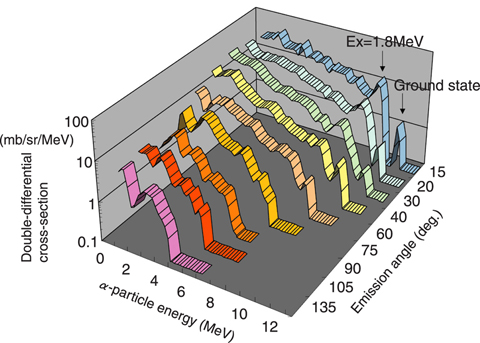
Fig.3-23 Schematic view of the charged-particle double-differential cross-section measurement system at the FNS facility

Fig.3-24 Measured double-differential cross-section of α-particle emission from beryllium
In a fusion reactor which uses deuterium (D) and tritium (T), neutrons carry most of the energy produced by the DT fusion reaction. Those neutrons lose their energy through various nuclear reactions with reactor devices such as the blanket, and the devices become hot. We have to accurately estimate how hot the device becomes in order to ensure the soundness of the device. Accurate prediction of generated heat is important because the heat will be also used to generate electricity in a future commercial fusion reactor.
The heat produced by nuclear reactions is called "nuclear heating" and is estimated by a simulation calculation in a reactor design. One of the essential data for such a calculation is the energy and angular distributions of charged particles like protons and α-particles emitted by a nuclear reaction. These distributions are called "double-differential cross-section (DDX) data".
We have measured DDX of charged particles emitted from candidate materials for a fusion reactor at the Fusion Neutronics Source (FNS) facility. A schematic view of the measurement apparatus is shown in Fig.3-23. Our measurements of α-particle DDX from beryllium are more detailed than any others in the world. The measurements are shown in Fig.3-24.
Based on this measurement data, we calculated a conversion coefficient from neutron flux to the nuclear heating of beryllium. The conversion coefficient was compared with the values estimated from two cross-section databases: Japanese Nuclear Data Library "JENDL-3.3", and Fusion Evaluated Nuclear Data Library "FENDL-2.0", the latter used for design calculations of the ITER. As a result, it was found that the conversion coefficients estimated from these databases were smaller by around 15% than that based on our measured data. This leads to underestimation of the nuclear heating calculated for beryllium by around 15%. We found that the cause of the underestimation lay in a problem with the α-particle DDX of beryllium in these databases. In this way, our measured DDX data have been very useful for clarifying problems in the databases and for improving the prediction accuracy of the nuclear heating in a fusion reactor.